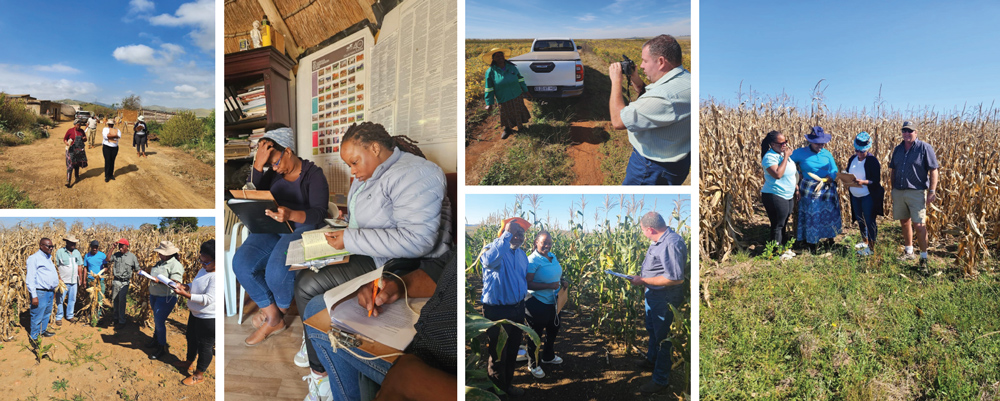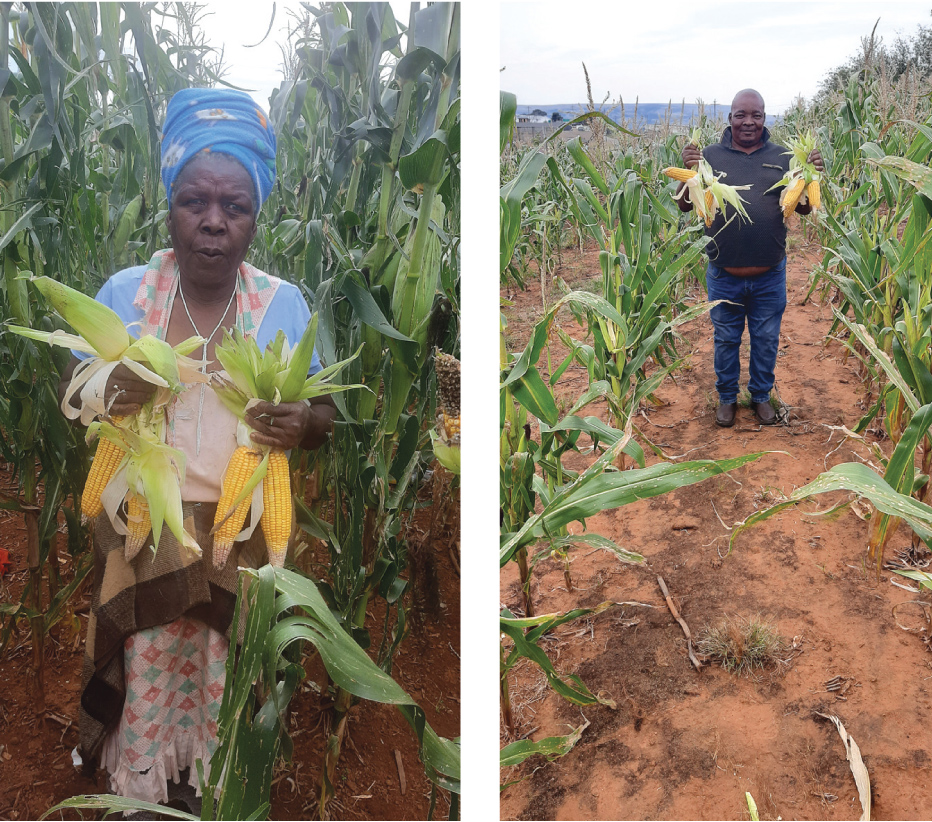July 2024
The main goal of the Farmer of the Year competition is not about winning, but about celebrating the learning, growth, development and hard work of the farmers who are part of the Phahama Grain Phakama (PGP) Farmer Development Programme.
This yearly competition is not only a highlight for all the farmers, but for the Grain SA and PGP teams as well. The adjudication panel recently travelled many kilometres to visit all the farmers who were nominated for the farmer of the year competition.
Grain farmers who are active members of the programme work hard every single day to build their farming businesses and provide for their families. This competition offers them the opportunity to highlight their hard work and determination. It is always encouraging to see the progress of these farmers.
Unfortunately, it is impossible to enter every deserving farmer, so only a handful of candidates from each province are nominated in the four categories according to a strict criteria.
The four categories are:
A DAY TO CELEBRATE
In 2008 the decision was made to take one day off from facing agricultural challenges, to celebrate and recognise the many different individuals and institutions involved in the field. At the Day of Celebration the finalists and winners in the different categories are announced and everyone who makes the programme possible receives acknowledgement. The 2024 Day of Celebration will take place on Wednesday 18 September at NAMPO Park near Bothaville in the Free State.
Furthermore, to inspire and encourage all the farmers The 250 Ton Club was established with different levels of membership recognising farmers who produce: Bronze (250 Ton), Silver (500 Ton), Gold (1 000 Ton) and Platinum (1 500 Ton).
Here are some photos of the visits that took place when the adjudicators visited the nominees. The four adjudicators travelled close to
7 000 km for these farm visits.

It has been a very busy time for the Phahama Grain Phakama (PGP) team, who did 101 farm visits from 15 April to 13 May: Dundee – 26, Kokstad – 5, Free State East – 26, Free State West – 4, Louwsburg – 22 and Mbombela – 18. Apart from looking at the moisture content and the ripening of the crop to get ready for harvesting, the marketing of the produce was also discussed.

Farmer Laswell Mthethwa has begun harvesting his soybean crop. The first few hectares were yielding 1,6 t/ha, which was better than expected.

Harvesting had to be done by hand on the farm of Alfred Gondo in the Mbombela region, as it was too wet to harvest with a combine. During the time of the farm visit, Alfred had already harvested 8 ha. The early planted maize was drying off well and almost ready to be harvested.

Just before his retirement, Jerry Mthombothi (left), who was the regional development manager at the Mbombela office, visited a farm near Badplaas. Xolani Gumede planted 180 ha of soybeans and 40 ha of maize, as well as 100 ha of soybeans and 65 ha of maize near Piet Retief.

During the farm visit to Amos Vilikazi in the Louwsburg region, it was clear that the soybean yield was going to be much less than expected. Parts of the crop still had leaves, while most of the plants were dry. Waiting for the leaves to fall would have had major consequences, because the pods had already started popping.
Yield assessments for the Beyond Abundance Project were done at the end of April for the subsistence farmers who plant between 0,5 ha and 3 ha. Here are some of the results of the 49 study groups’ yield assessments that were finalised:

Here are two farmers from the Taung area where crops were looking very good and it was clear that effort was made to control weeds.

The farmers of the Emangweni Study Group can expect average yields due to the weather conditions and other challenges.

Two farmers from the Elukwatini Study Group had already harvested when the team’s visit took place. The harvested maize was used to estimate the yield.
Publication: July 2024
Section: Pula/Imvula